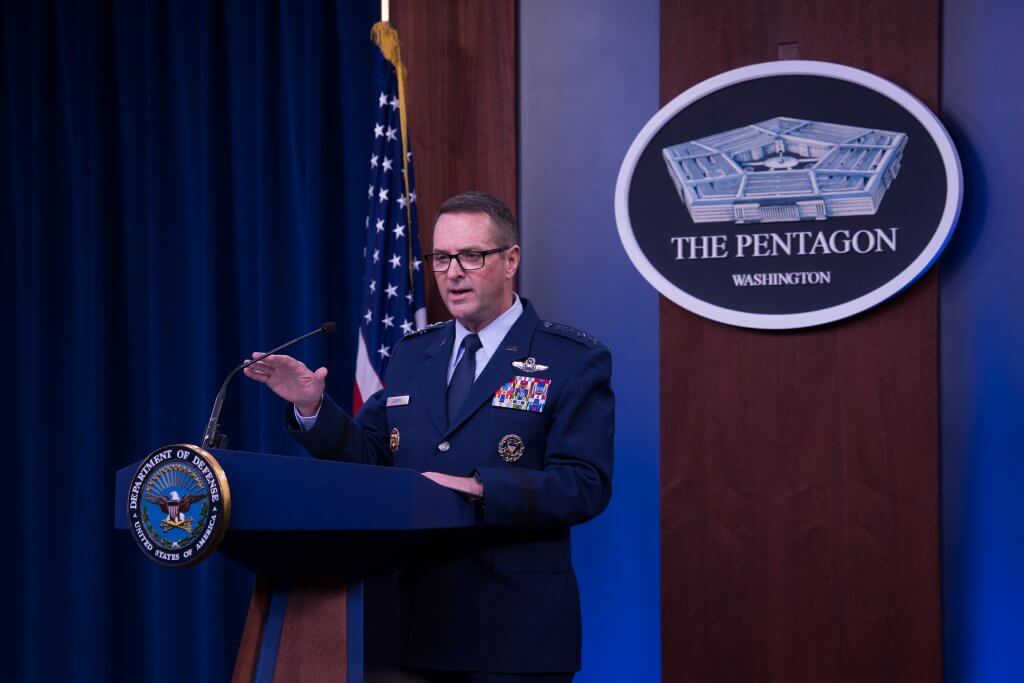On any given day during the ongoing coronavirus pandemic, members of the National Guard are administering COVID-19 tests, making personal protective equipment, serving in homeless shelters or food banks and helping cities retrieve the bodies of people who have passed away in their homes.
It’s unlike any crisis response the National Guard has seen since Hurricane Katrina in 2005.
“We are known for our fast response to catastrophes, disasters, natural disasters of every sort,” said Air Force Gen. Joseph Lengyel, chief of the National Guard Bureau. “This one has been like its own natural catastrophe in every single state — like a hurricane in every single state, territory and the district. And they’re all different.”
Much like 9/11 changed the Guard’s mission from that of a largely strategic reserve to more of an operational force, with troops consistently deploying into combat for going on two decades, the pandemic — as well as weeks of civil unrest — have put a spotlight on the Guard’s domestic mission.
“The role that we play in the homeland — this has been really on display in some new and very enlightening ways, I think,” Lengyel, who has served as Guard chief since 2016, said. “At one point it really has been nothing short of historic, the amount of people and National Guard members that have come to respond at this time in the United States.”
At its peak in early June, there were more than 120,000 men and women in the Army and Air National Guard services who had been activated, according to figures provided by the bureau. Of those, 81% were working in the U.S., primarily on COVID-19 relief efforts and aiding law enforcement in responding to civil unrest during a wave of protests against police brutality following the high-profile killing of George Floyd, a 46-year-old Black man, by Minneapolis police on Memorial Day.
Before the pandemic, the Guard typically had around 40,000 activated members at once, which included 30,000 deployed around the world on Title 10 orders and another 10,000 troops working in the U.S. at the southwestern border or on counter-drug missions.
Lengyel said the spike doesn’t bring up any unique personnel or budgetary issues. But the pandemic itself is likely to have lasting implications for how the Guard executes its missions.
“We’re going to have to continue to do things a little bit differently than we were before COVID — the way we train, the way we operate. That’s just how it is now,” Lengyel said. “We have begun to ramp up our training processes again so we can stay ready. But until there’s a vaccine out there, I think you’re going to continue to see us use social distancing, follow CDC guidelines, not gather in big groups, and we’re going to do things the way we need to do them so that we can train and be ready to do what we need to do.”
That includes rethinking hurricane response and how troops will operate shelters for the upcoming season with social distancing and personal protective equipment requirements.
Day-to-day operations have also changed substantially, as remote work has become commonplace.
“We kept the machine running and every single day and every single week, the process of using telework got better, and people were able to become more and more productive,” Lengyel said. “I think that will change some things permanently, not just in the Pentagon but in the way we do operations and business across all the United States.”
As Lengyel prepares to retire from the military this year, pending the Senate’s confirmation of his replacement, Lt. Gen. Daniel Hokanson, the general said he is proud to have led the National Guard Bureau through this “historic” time.
“It’s required, really, the contribution of everybody — from the members themselves, their spouses, their families, the employers,” he said. “But to watch this National Guard and come out and do this homeland response which is really kind of uniquely the National Guard’s portfolio, I’ve never really been more proud to be a member of the National Guard than I have over these last few months.”

